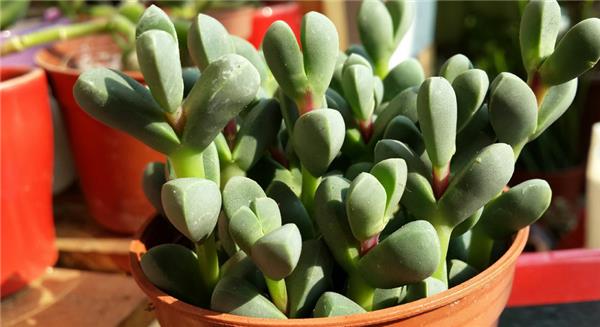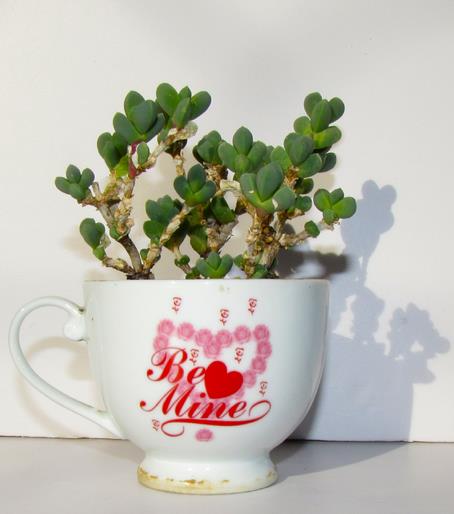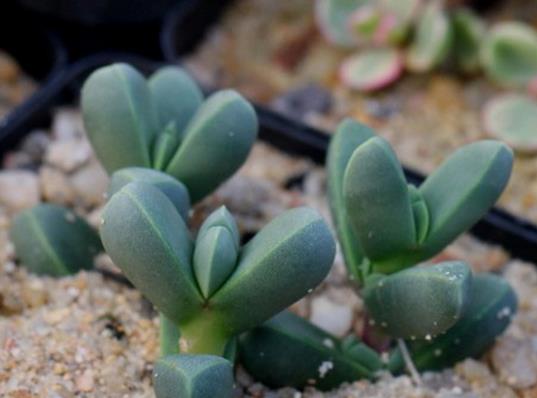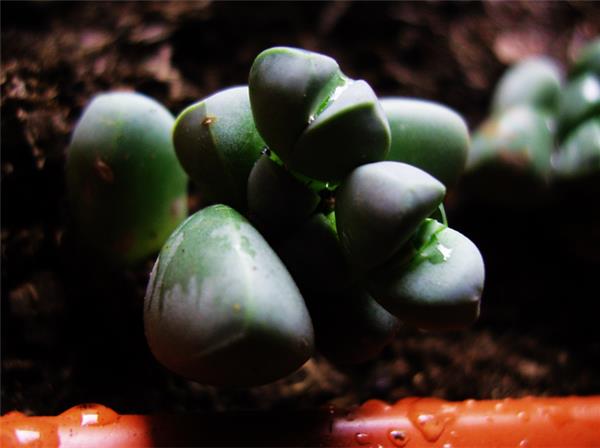Introduction and planting method of a sika deer antler Begonia at home
Antler Begonia is an ornamental plant. Its potted plants can be placed next to televisions and computers to absorb radiation. They can also be planted indoors to absorb formaldehyde and other substances to purify the air. Now let's take a look at the knowledge of staghorn begonia.

First, the introduction of staghorn Begonia
Deer horn begonia, also known as smoked wave chrysanthemum. Succulent plants (serous plants) of the genus Tripterygium (Prunus officinalis). The place of origin is in South Africa. Like warm, dry and sunny environment. Afraid of cold, drought and high temperature. Rich, loose sandy loam is required. The winter temperature is not lower than 15 ℃. Its leaf shape is beautiful and has a certain ornamental value; it likes warm, dry and sunny environment. Not resistant to damage, resistant to drought, afraid of high temperature. Rich, loose sandy loam is required. The winter temperature is not lower than 15 ℃.
Second, the morphological characteristics of Malus angustifolia.
Staghorn begonia plant is not high, perennial evergreen succulent herbs, often subshrub-like, branches are mostly creeping. Leaf blade fleshy trigonous, very special. Staghorn crabapple blossoms in winter and has white, red and lavender colors. The common varieties are divided into long-leaf and short-leaf varieties, and they all bloom yellow in summer.

3. Ecological habits of Begonia angustifolia.
Staghorn begonia like warm, dry and sunny environment, not cold-resistant, drought-resistant, afraid of high temperature, pay attention to sunshade in summer, otherwise the surface is easy to wrinkle. Rich, loose sandy loam is required. The winter temperature is not lower than 15 ℃. Staghorn Begonia is able to withstand a low temperature of minus 3 degrees Celsius when the basin soil is dry. The soil can be made of rich, loose sandy loam. The kite is cinder mixed with peat, the soil surface is covered with granular river sand, the basin can be watered or the soil is slightly wet, and there is no need to take root in a cool and ventilated place. the basin soil is very dry before giving some water, the leaves will wither and atrophy before sending roots, dehydration is serious, but do not worry about hanging, dry point does not matter, crumpled will be very good to take root, found that there are traces of growth can slowly normal water supply.

4. Cultivation techniques of Malus angustifolia.
1. Cultivation environment
Deer horn Begonia planting should choose a slightly higher terrain is not easy to stagnant water, sunny place. The soil is neutral and partial, and the pH value is not less than 7. The superior quality is required to be loose, but not too fertile. The planting hole should be determined according to the size of the root system, and the planting depth should be 10% water from the ground. It is best to plant with soil mass and pour enough water after planting. Spray new high-fat membrane to isolate diseases and insect pests and improve the survival rate.
two。 Cultivation
The deer horn crabapple changes the basin every spring, and prunes the whole plant, adding fertile peat soil or mixed soil composed of rotten leaf soil and coarse sand, and spraying water slightly. Spring growth period to keep the basin soil is not dry, more water sprayed on the ground to maintain a certain air humidity. In summer, the antler crabapple is in a semi-dormant state, which can be maintained in a semi-shady place to keep the basin soil not too dry. After autumn, the staghorn crabapple began to grow, fertilizing once a month. The growth of stems and leaves in winter entered a prosperous period and began to blossom. It blossoms continuously when the room temperature is kept at 15-20 ℃ in winter. The potted plant needs to be renewed after 2-3 years.

3. Key points of cultivation
The suitable temperature for the growth of staghorn crabapple is 18-25 degrees, and not less than 10 degrees in winter; the soil can generally be mixed with fertile peat soil or rotten leaf soil and coarse sand; watering is generally based on keeping the basin soil not dry in spring and autumn, spraying water more on the ground, maintaining a certain air humidity, curing in semi-shady places in summer to keep the basin soil from being too dry; fertilization is generally applied once every semimonthly during the growing period. The propagation methods are commonly used for sowing and cutting propagation, sowing, indoor pot sowing from April to May, about 10 days after sowing, the roots of the seedlings are thin and shallow, and the seedlings need to be watered cautiously, and it is better to move the seedlings after one month, and it is better to plant them in spring and autumn. Cut into 8-10 cm, inserted in the sand bed, about 15-20 days can take root.
The above is the knowledge of antler Begonia. I hope I can help you.
Related
- Wuhan Hospital Iron Tree Blooming Result Was Instantly Frightened by the Gardener Master
- Which variety of camellia is the most fragrant and best? Which one do you like best?
- What is the small blue coat, the breeding methods and matters needing attention of the succulent plant
- Dormancy time and maintenance management of succulent plants during dormancy
- Minas succulent how to raise, Minas succulent plant pictures
- What are the varieties of winter succulent plants
- How to raise succulent plants in twelve rolls? let's take a look at some experience of breeding twelve rolls.
- Attention should be paid to water control for succulent plants during dormant period (winter and summer)
- Watering experience of twelve rolls of succulent plants
- Techniques for fertilizing succulent plants. An article will let you know how to fertilize succulent plants.



